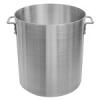The 3M APC/ECC petrifilm instructions do indicate that isolated colonies can be removed for further identification. This is done by gently lifting the film and sampling a colony with a sterile loop, then streaking it onto a growth media. From there you could grow a culture and do gram staining or other identification tests. I've never personally isolated any bacteria from petrifilm, I wouldn't call this practice ideal, but I think it can work in a pinch. Some disadvantages I could see:
- If the original sample isn't diluted enough it will be difficult to sample an isolated colony.
- On APC film in particular, you can't be certain of how many different types of bacteria you're growing. You'll be growing multiple types of bacteria and they all look the same on the film.
- The E.coli/Coliform petrifilm carries the warning that EcoliO157 will not actually create a positive E.coli result on the plate. If you're concerned with identifying O157 specifically, you should consider a different approach















